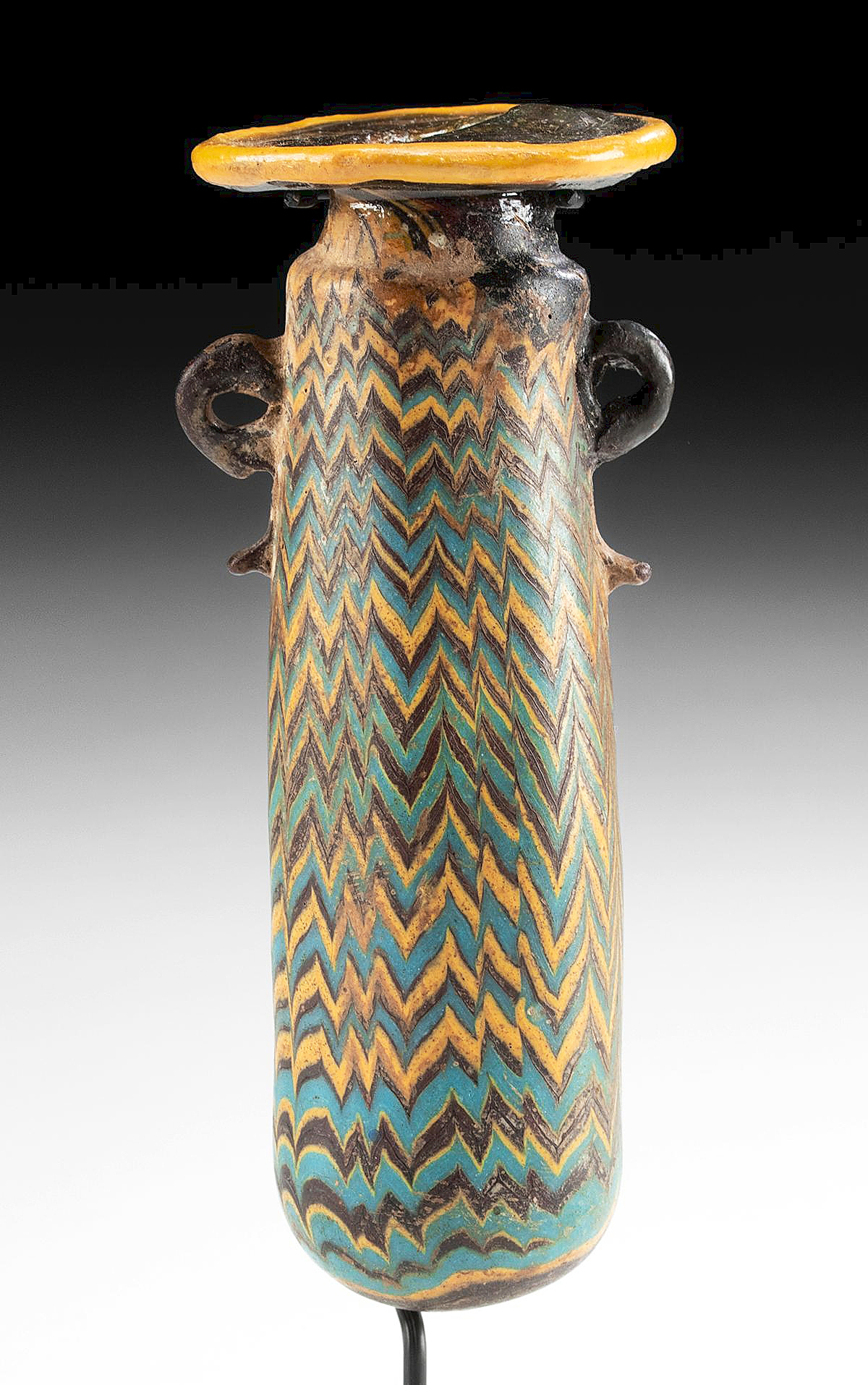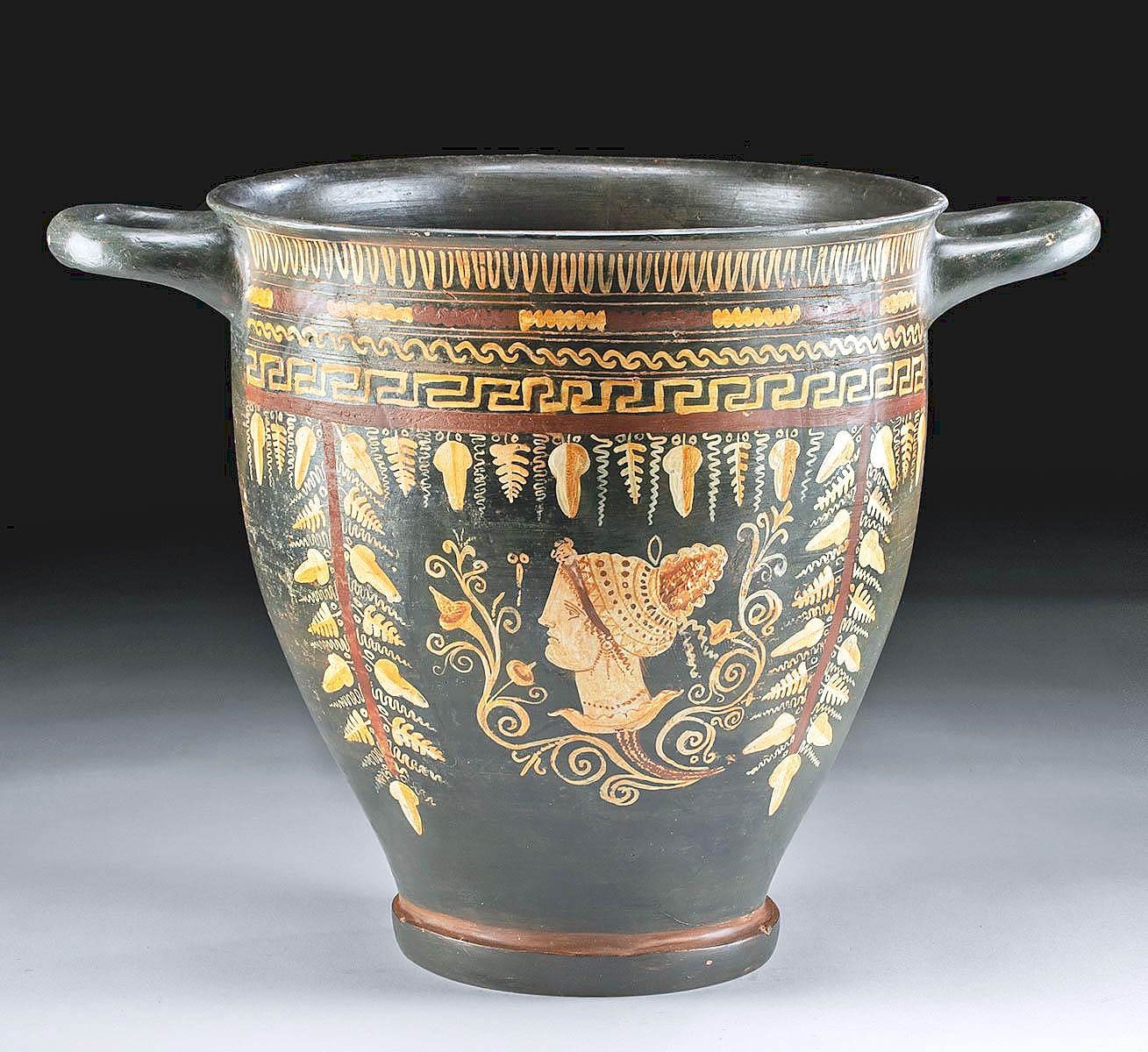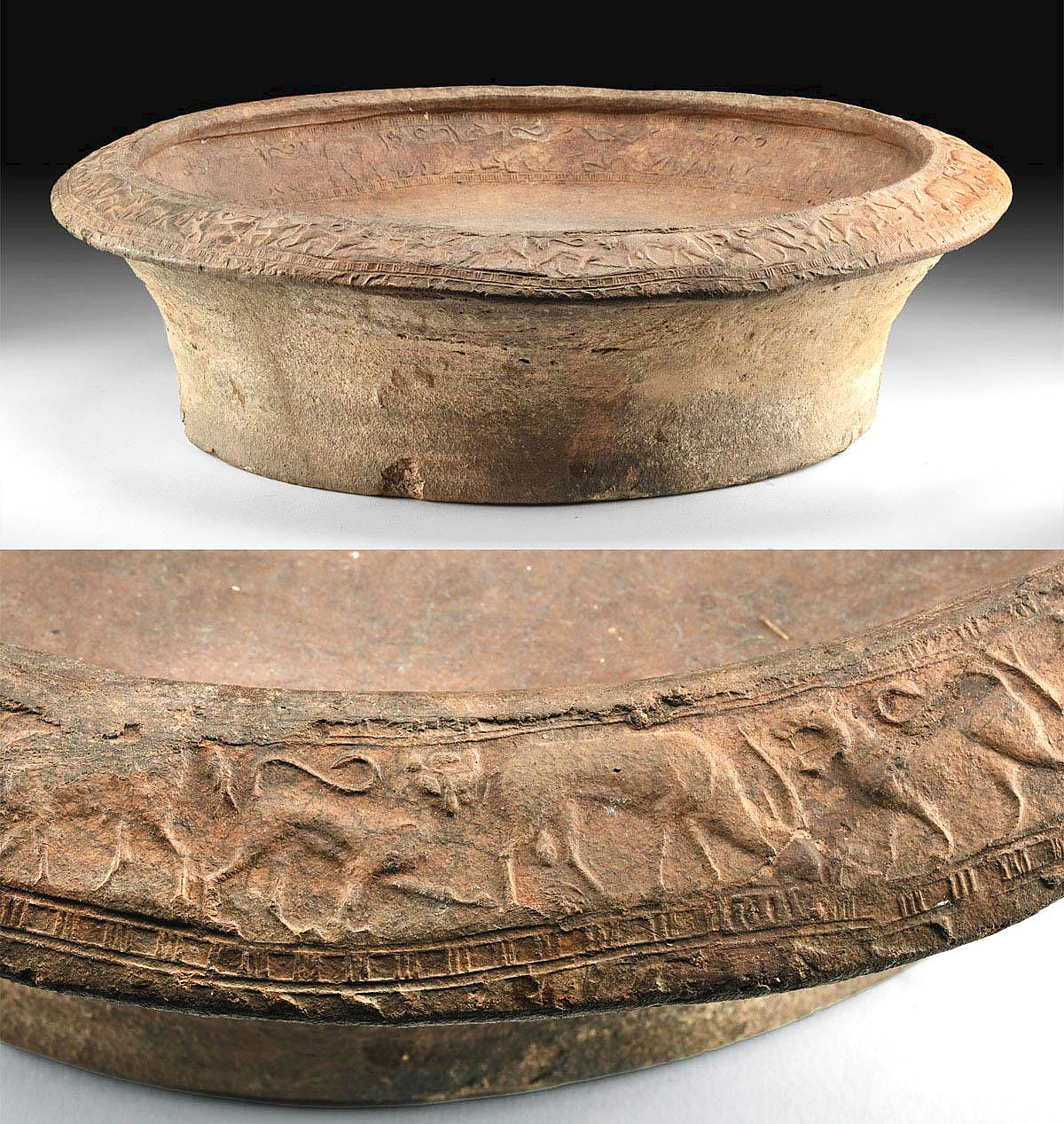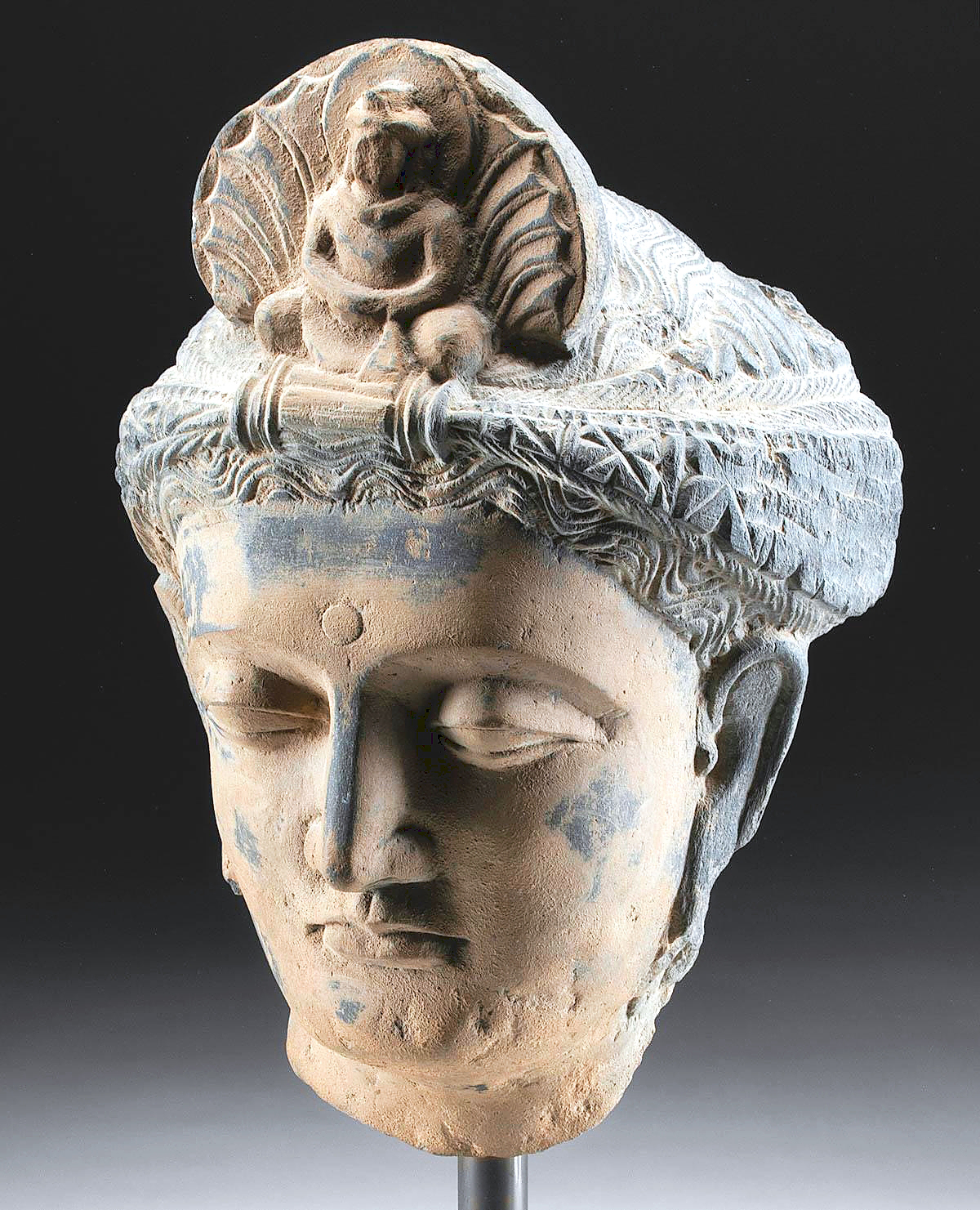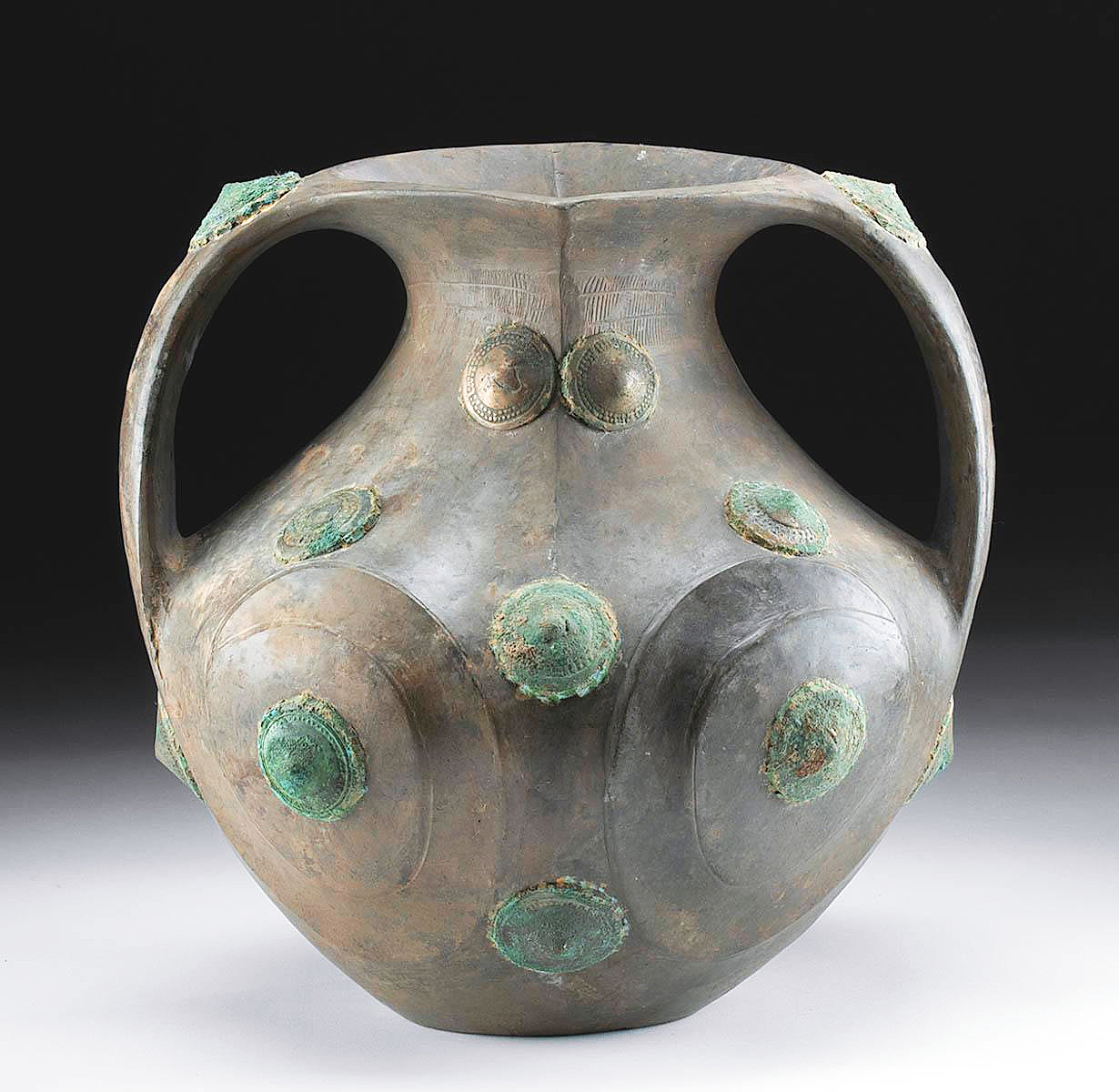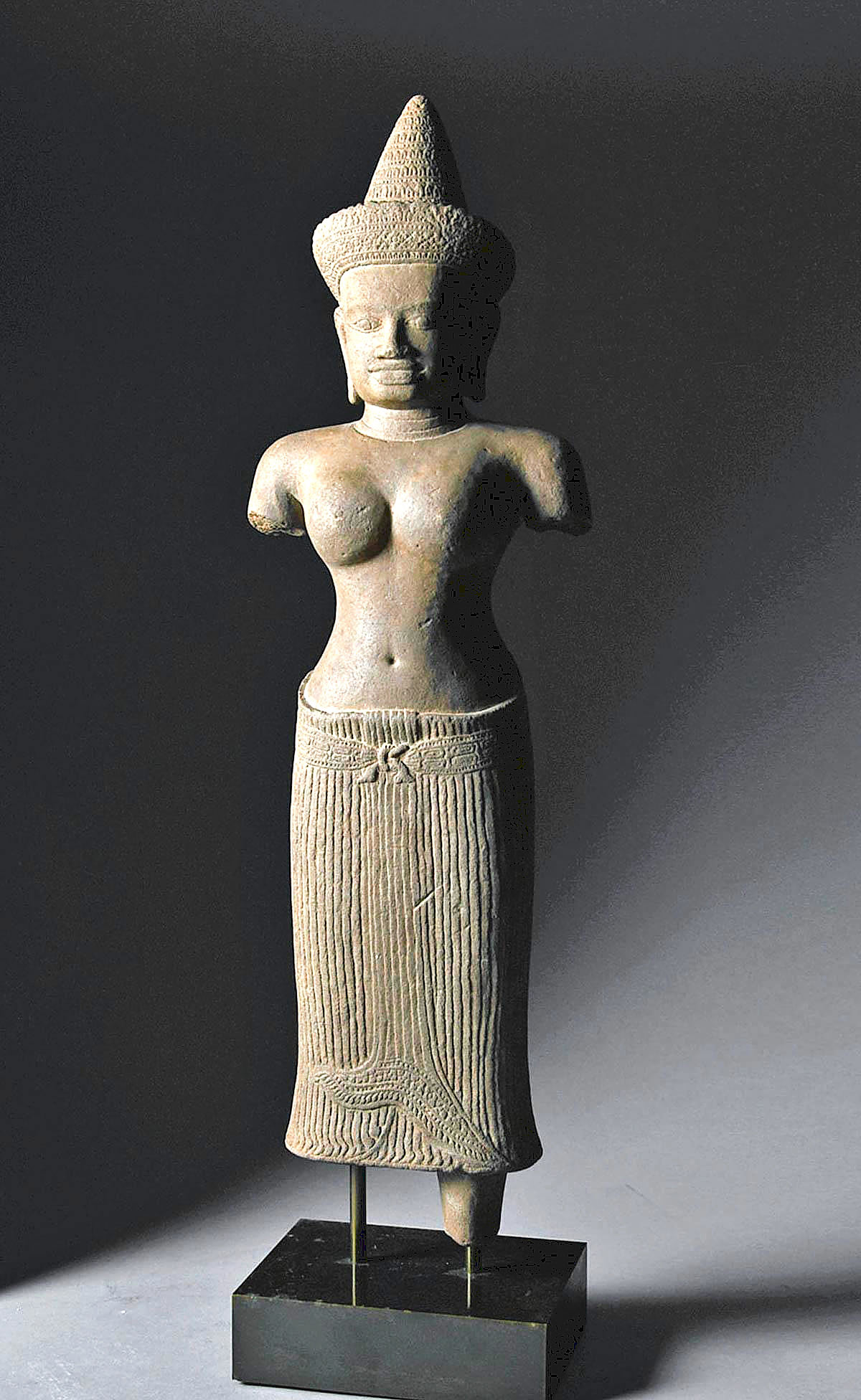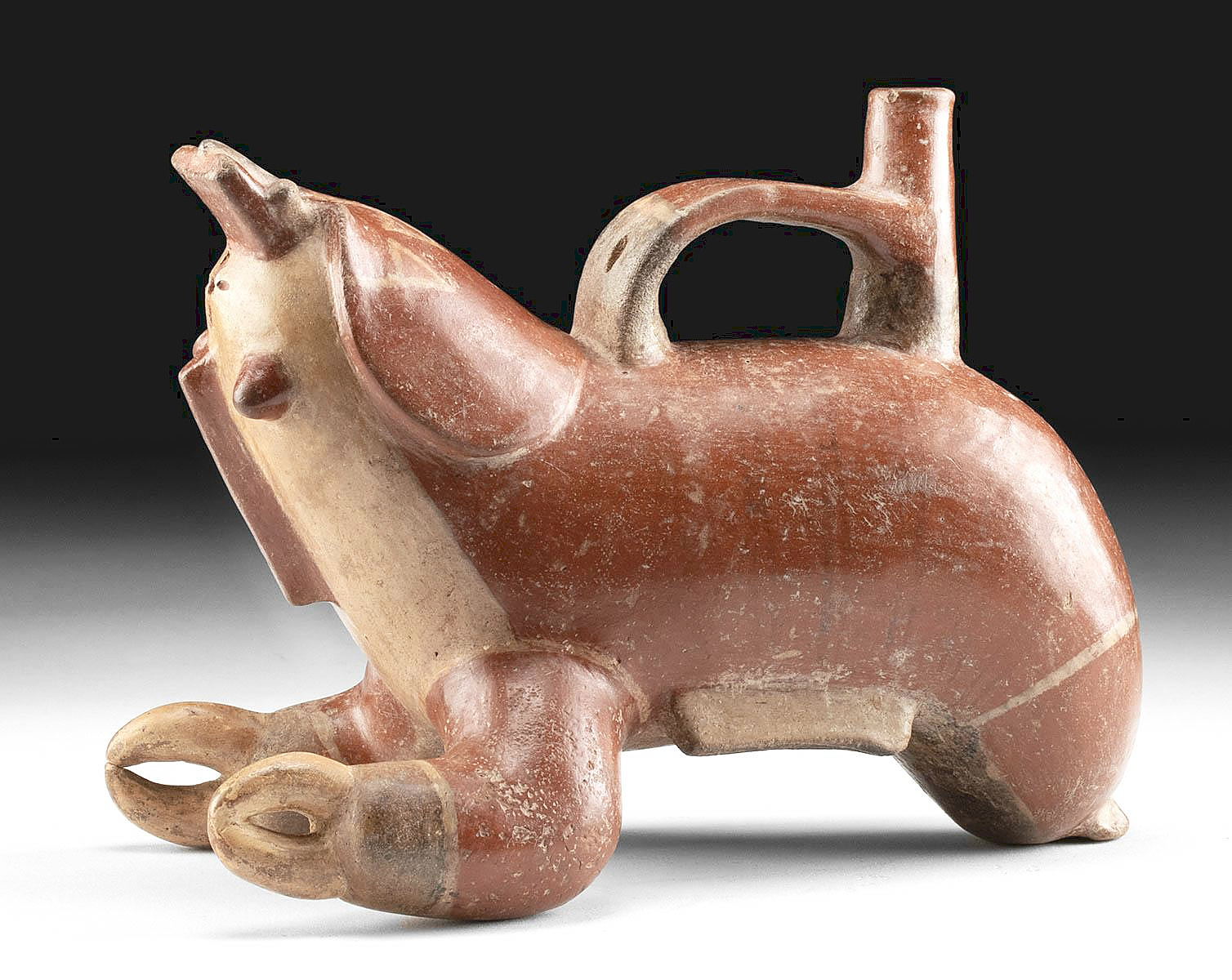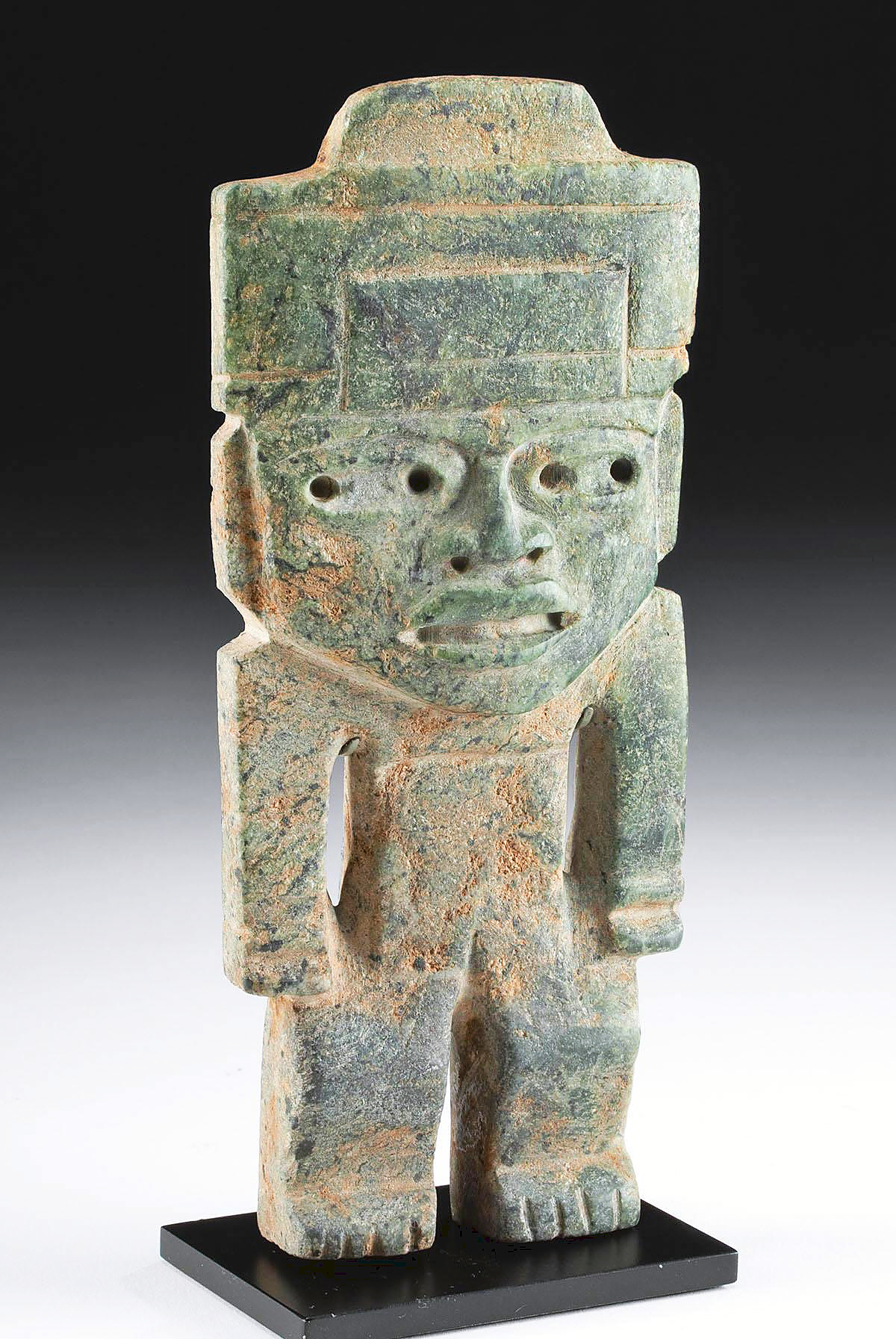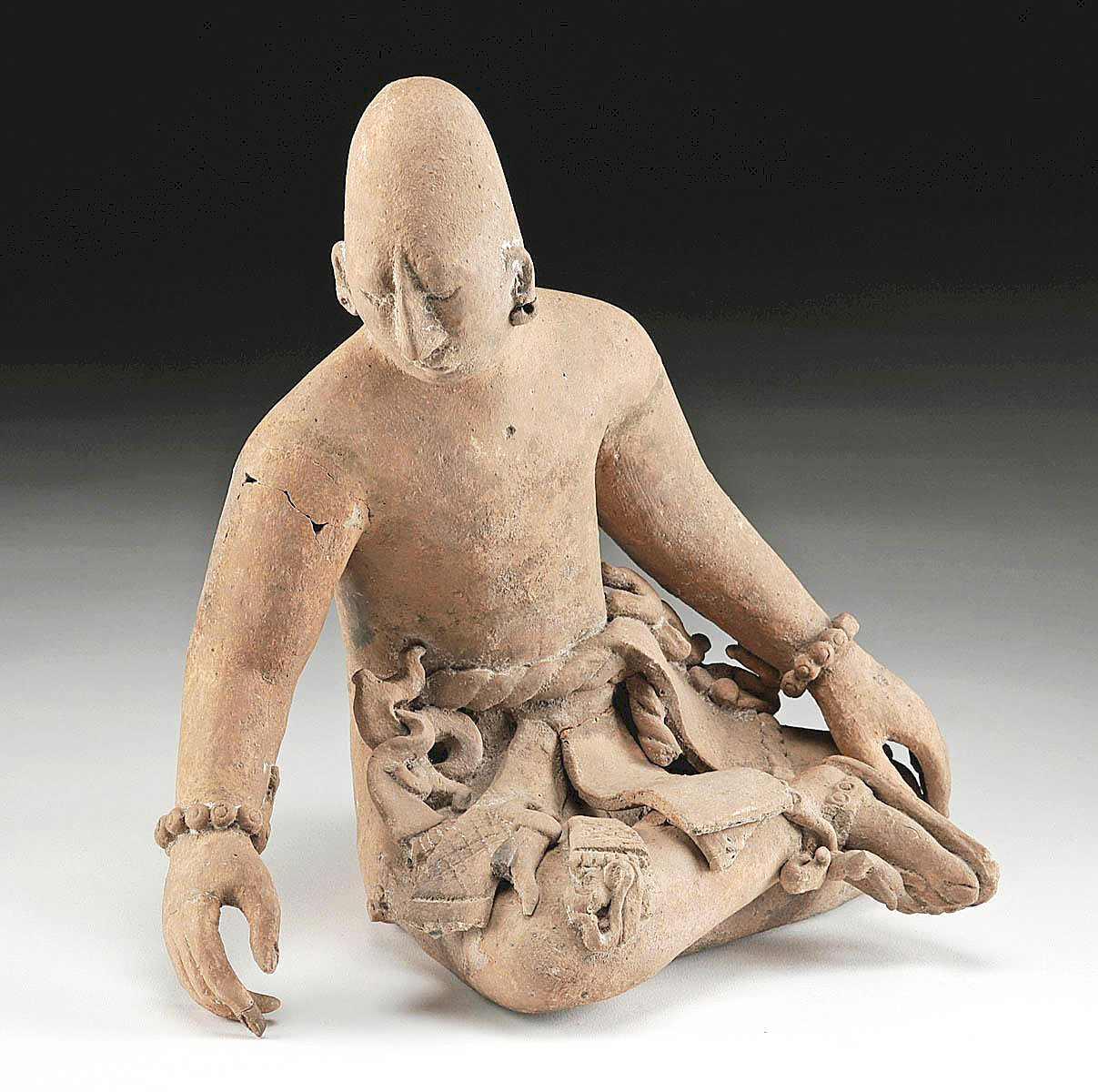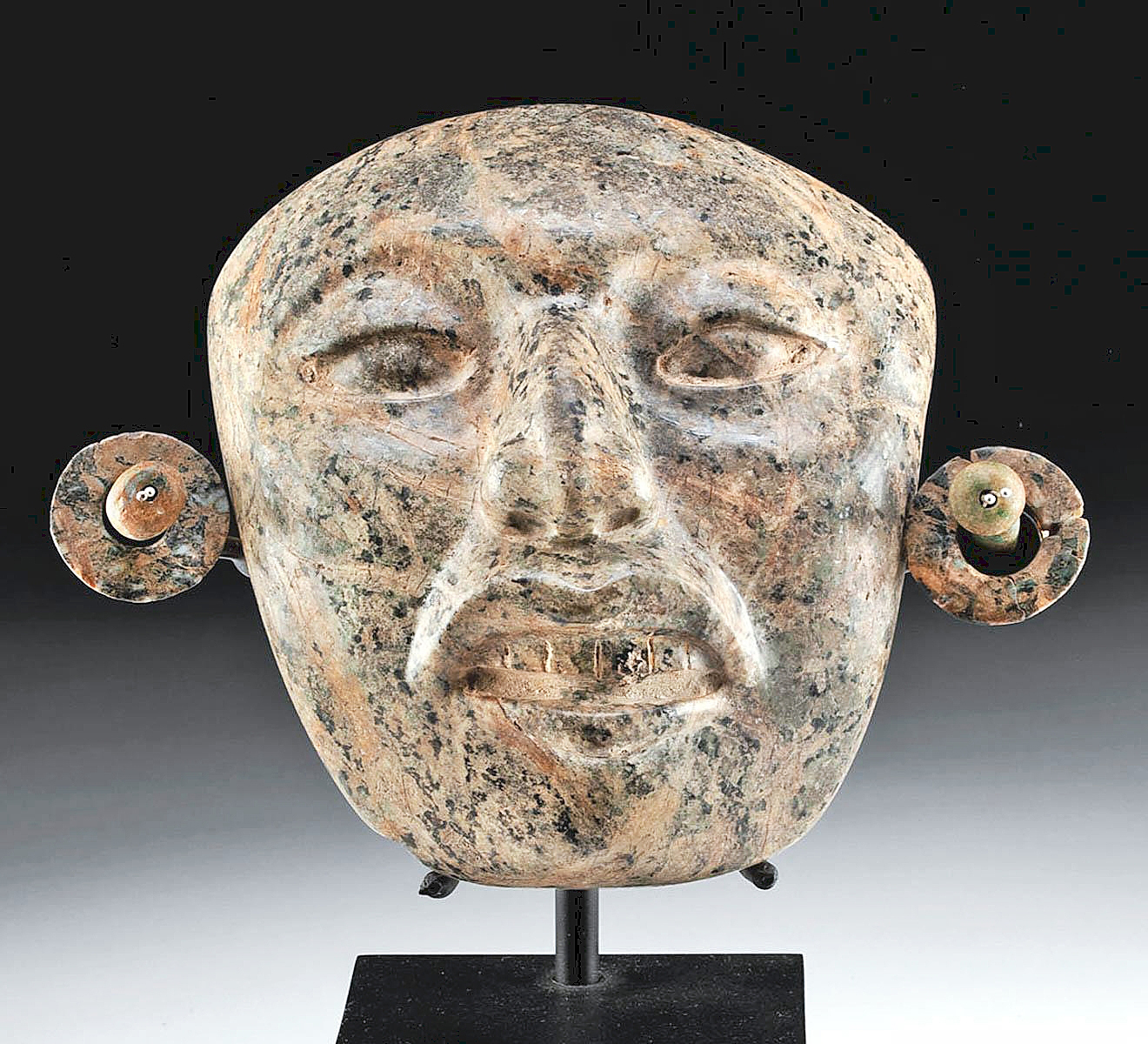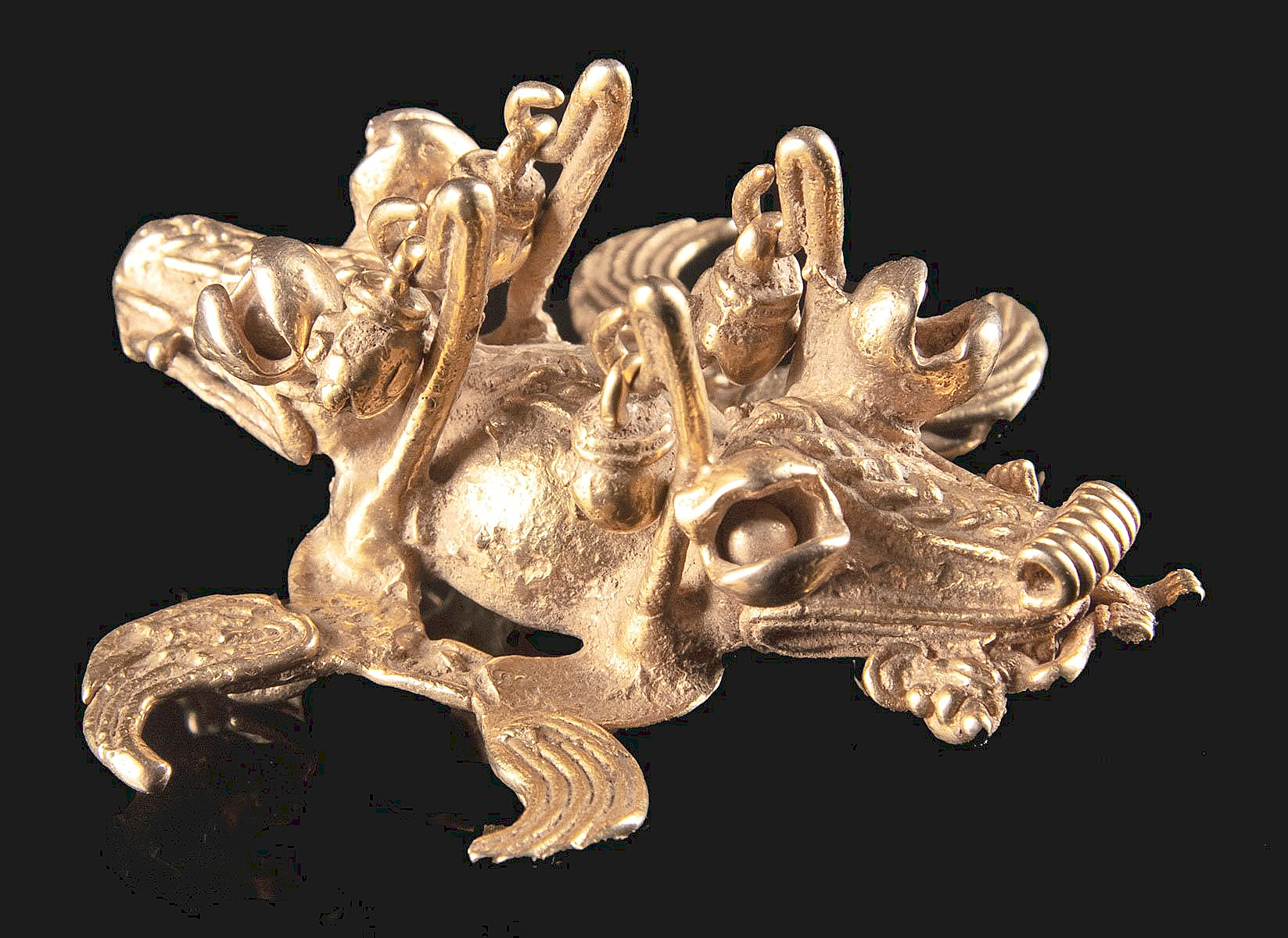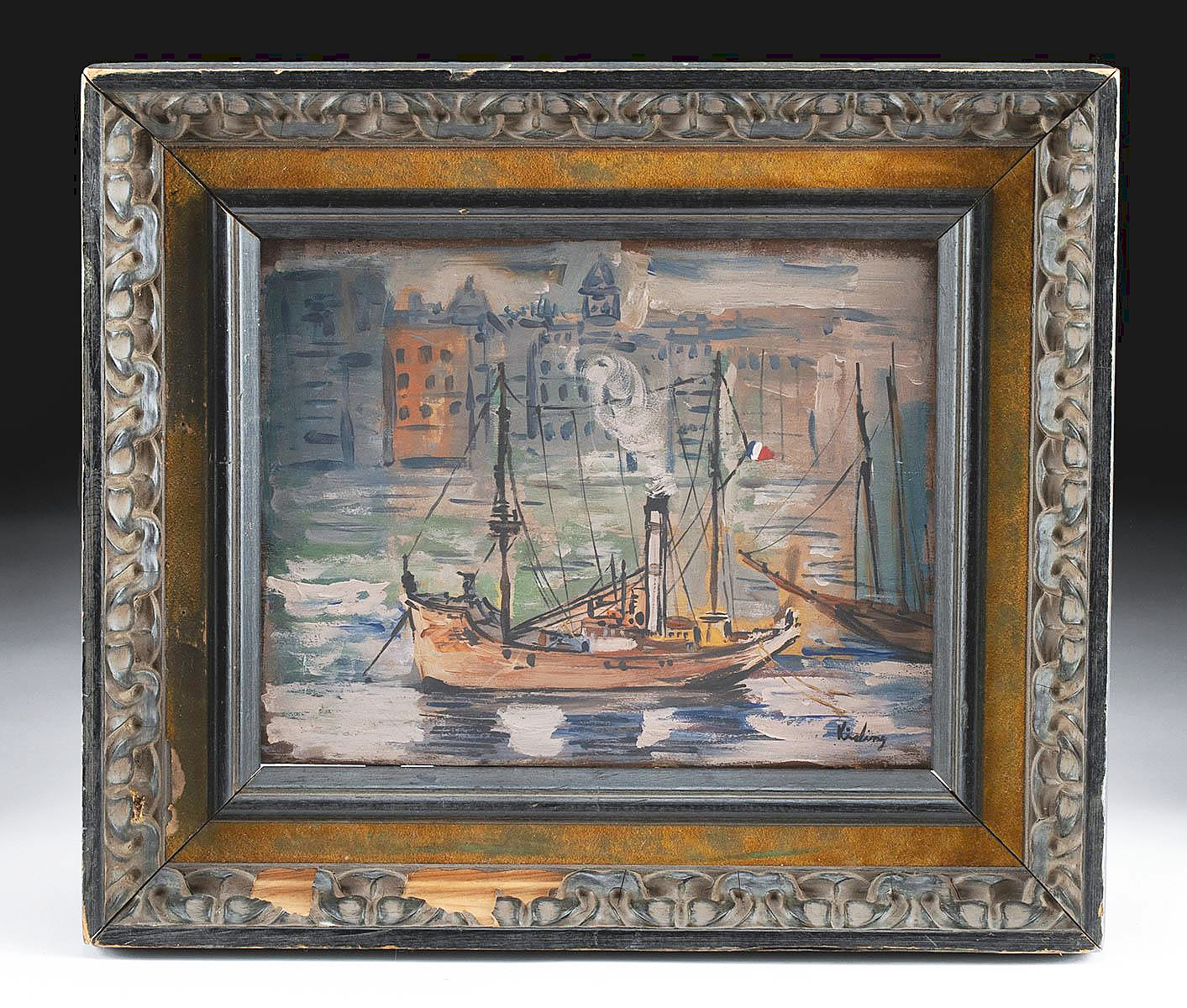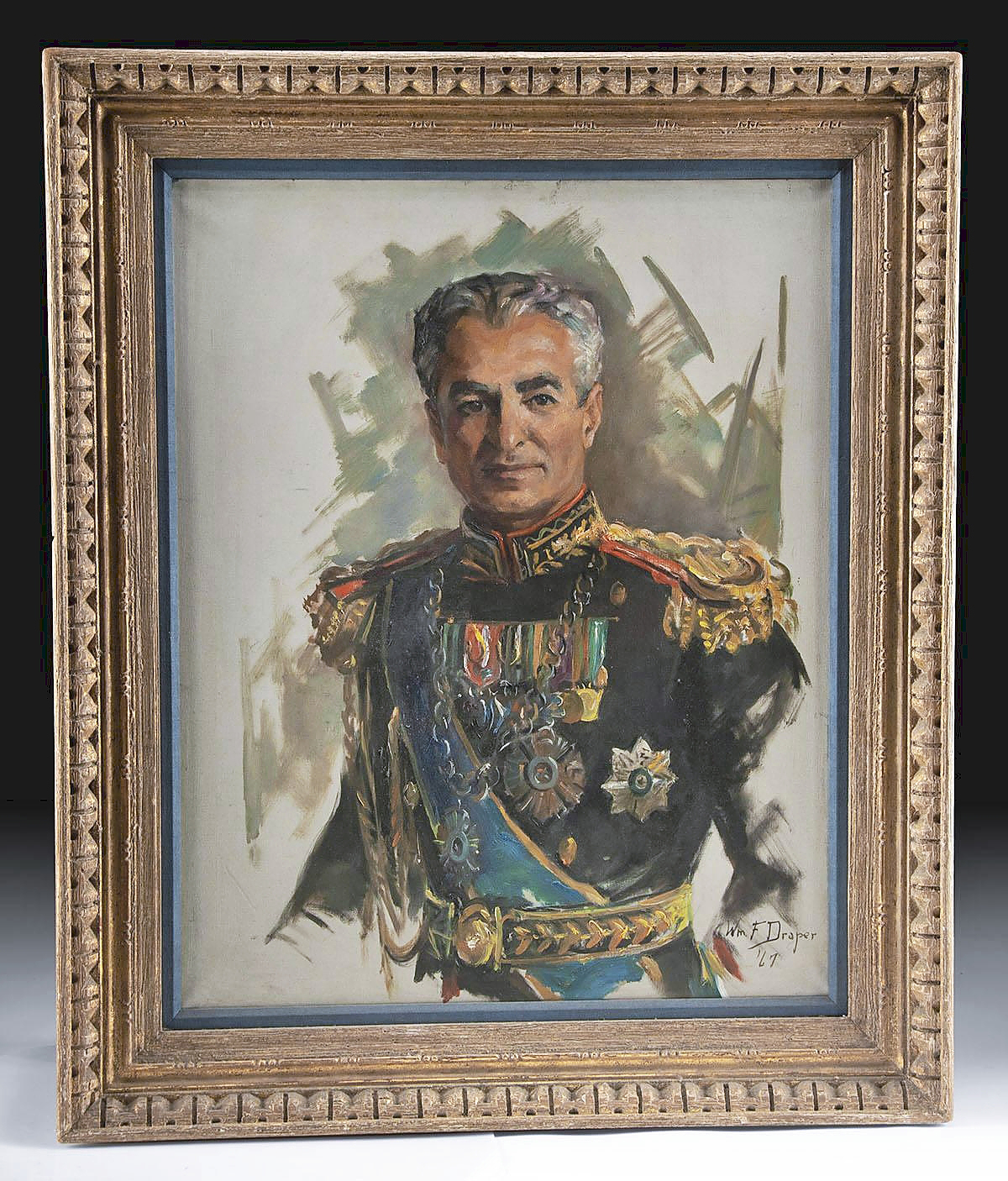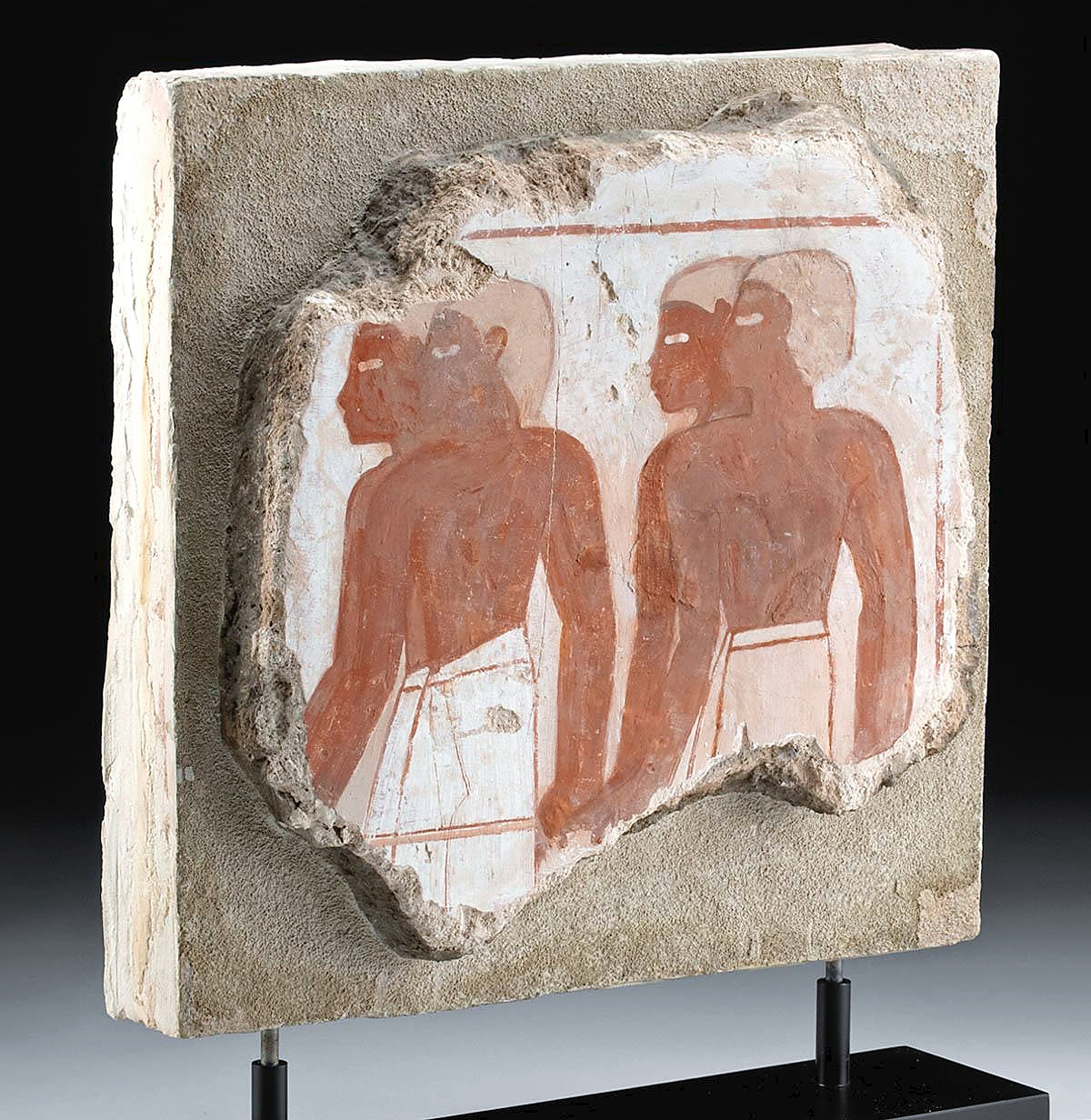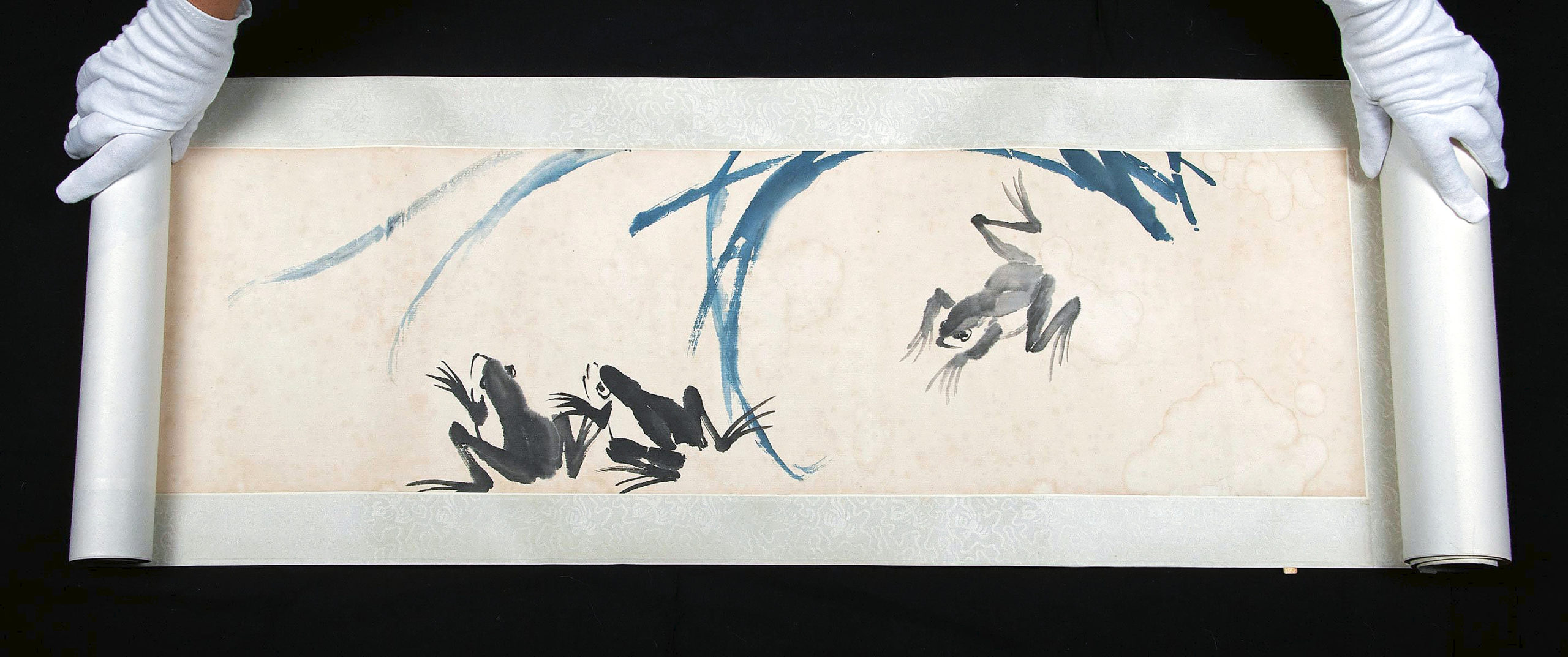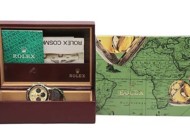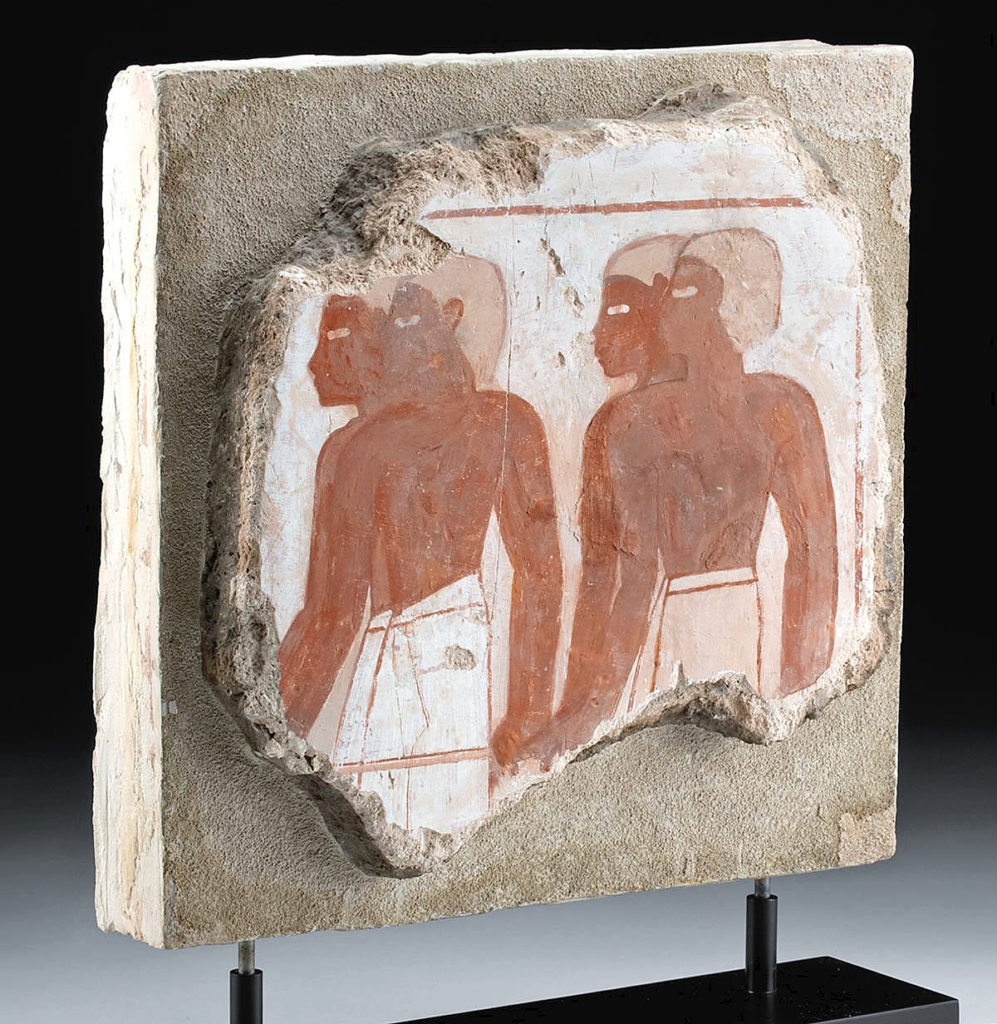
“The most important part of this is that it can be traced back to a specific tomb…extremely rare!” said Teresa Dodge about the first lot of the sale, this ancient Egyptian stone panel from the Theban tomb of Neb-Amun, circa 1401-1353, which had provenance to two private collections as well as New York City’s Royal Athena Galleries. It sold above estimate to a new American client for Artemis, for $29,728.
Review by Madelia Hickman Ring, Photos Courtesy Artemis Gallery
LOUISVILLE, COLO. — “The demand for well-provenanced antiquities continues to drive prices. Too many auction houses can not provide verifiable history about the pieces that they’re offering, putting both the house and the new buyers at risk. The feds are watching, and it is extremely important that buyers know the provenance of the items they are buying.”
Such were the words of wisdom and hindsight imparted by Artemis Gallery’s owner and executive director Teresa Dodge, three days after the house gaveled down more than 400 lots in its March 9 Exceptional Antiquities, Ethnographic and Fine Art auction. Dodge reported participation from both US and international buyers as well as “tons of new buyers…and auction and post-auction sales running 20-25 percent ahead of projections.”
The top price of the day — $36,369 — was earned by a 12-foot-long handscroll by Chinese artist Qi Baishi (1864-1957), which came to Artemis from a private collection in Gaithersburg, Md., the family of an art collector and adjunct professor at the Academy of Arts & Design of Tsinghua University in Beijing. Depicting shrimp, crabs, frogs and aquatic plants, the scroll featured a calligraphic inscription that translates to “Painted by Qi Huang, descendent of the old house in Xingtang” and two seals, “Qi Da” and “Jieshan yin guan zhuzhe,” one of Qi Baishi’s many studio names. Lauded as “the most popular painter in Twentieth Century China,” Baishi was esteemed for his traditional paintings of birds, flowers, small animals and insects by the conservative scholarly elite, the common citizens of China’s urban centers, foreign collectors and revolutionaries both artistic and political. A self-taught artist raised in the Hunan province, Baishi would rise above these humble beginnings to become “a master literati artist” who studied with masters of the Shanghai School before moving to Beijing, where he acquired both domestic and international patrons.
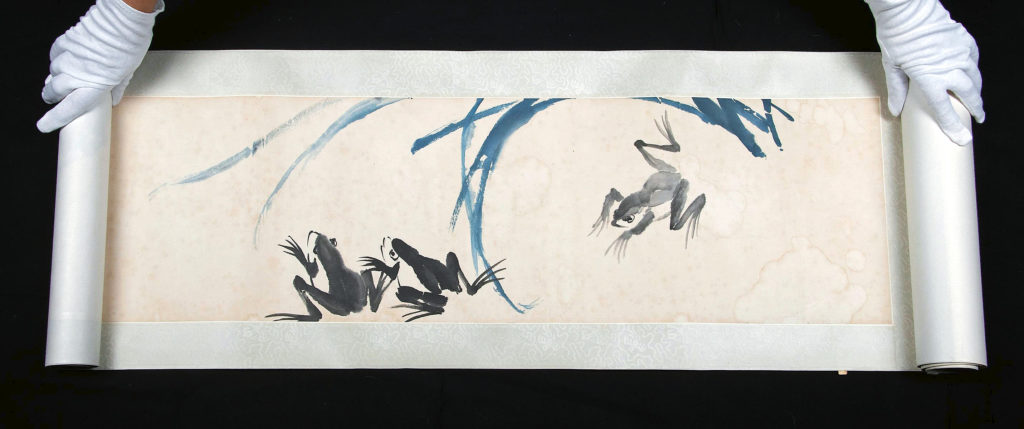
This handscroll painting by Qi Baishi measured 10 by 145¼ inches and featured an aquatic scene and was executed in ink and colors on paper. Bidders took it to $36,369, the highest result in the sale.
A Han dynasty Lifan pottery amphora with inlaid bronze bosses was from the same continent but two millennia earlier. Standing 12 inches tall, the piece related to works at the Kalamazoo Institute of Art and at the British Museum. Estimated at $2,4/3,600, it exceeded expectations and sold for $9,298.
According to Dodge, it is rare to be able to trace Egyptian tomb paintings back to the tombs they were excavated from, but Artemis was delighted to offer one such work, a New Kingdom, later Eighteenth Century dynasty stone panel from the tomb of Neb-Amun, who is documented as the “Captain of Troops of Police on the West of Thebes, Standard bearer of the Royal Barque,” circa 1401-1353 BCE. The 11-1/8-by-12-inch panel, mounted on a backing of 12-7/8 by 13 ½ inches with a custom stand, had been published in Walter Wreszinski’s Atlas Altägyptischen Kulturgeschichte (1923). Artemis’ auction catalog compared the panel to frescoes from the tomb of Rekhmere in the collection of Tombs of the Nobles in Luxor-Thebes, Egypt and frescoes from the tomb of Onsou, in the collection of the Louvre; other scenes from Neb-Amun’s tomb currently in the collection of the Metropolitan Museum of Art in New York City were also cited. Estimated at $15/22,500, it sold for $29,728, to a buyer in the United States who had not bid with Artemis before.
Collectors of Classical Greek, Roman and Etruscan antiquities found many other things to bid on, including a Gnathian polychrome skyphos, Magna Graecia, southern Italy, circa 360-325 BCE, which sold just below its high estimate, for $21,505. Offered for the first time at auction but with provenance to collections in Superior, Colo., West Hollywood, Calif., and Spain, the 13-inch-tall pottery vessel was embellished by an intricate decoration of fugitive pigments featuring the central image of a lady’s head in profile surrounded by scrolling motifs and Dionysian imagery of vine and ivy details. A thermoluminescence (TL) test had been performed prior to the sale and the piece was found to be ancient; a copy of the report was available upon request.
From pottery to glass, a Greek coreform glass alabastron that dated to the Classical period, circa Fifth Century BCE, sold for $4,111. Not only had it been exhibited in “Ancient Glass: Selections from the Richard Brockway Collection” at the Ford Museum of Art at Willamette University, Salem, Ore., in 2007 and in “Glass of the Ancient World” at the Vero Beach Museum of Art in 2008 but it was featured in “Collecting Ancient Glass” in Antiques & Art Around Florida (Fall 2009-Winter 2010).
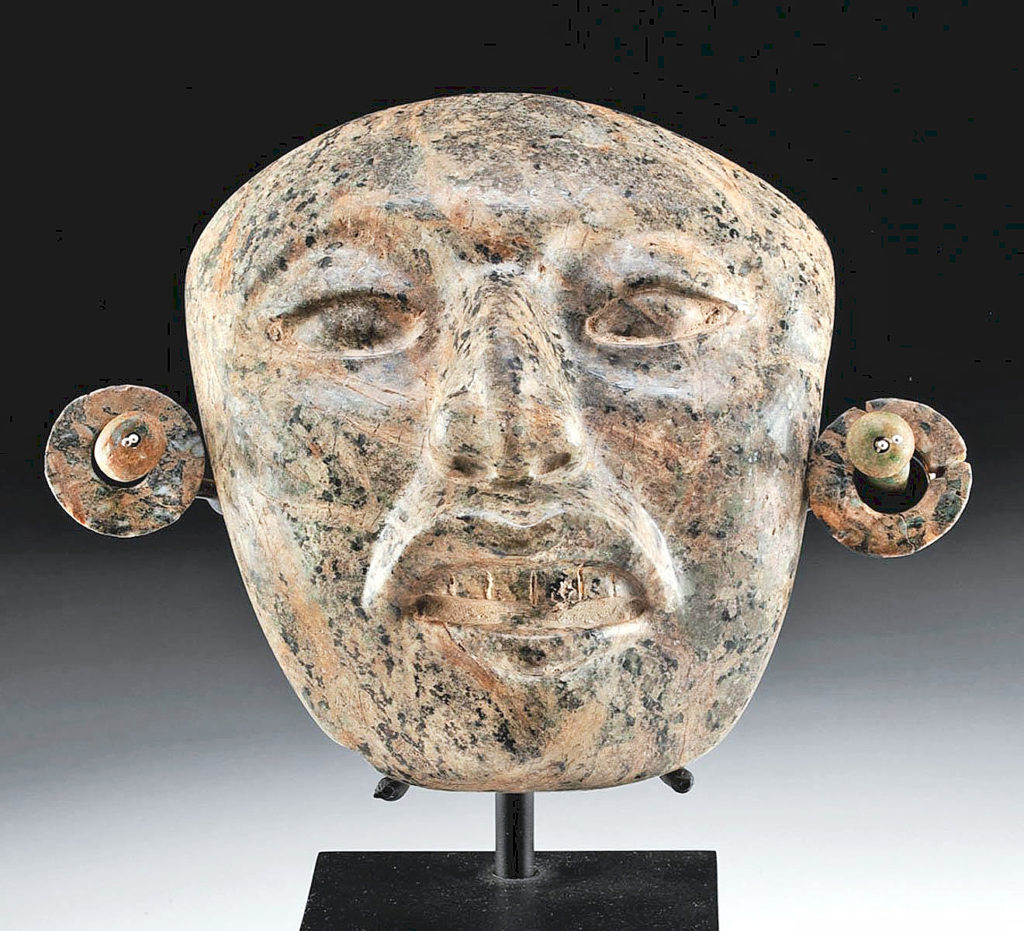
This Pre-Columbian Mayan greenstone mask, circa 550 to 900 CE, listed provenance to no fewer than four collections and a gallery; it stood to $14,548.
Rounding out the various media available from Classical antiquities was an Etruscan impasto brazier decorated with scenes from a boar hunt that dated to circa 768-264 BCE. Measuring 17¾ inches in diameter, it was described as “monumental” and featured a cylinder seal identified as “The Billy-Goat Boar Hunt” that relates to two other braziers from the same group, one in the Louvre, the other in Copenhagen. With provenance to a private Vero Beach, Fla., collection and an old French collection, it had been previously offered at Druot. Bidders chased it to $6,009.
Several lots in the sale hailed from Central and South America, led at $17,647 by a Mayan pottery seated scribe that had been in the collection and estate of Marc Schmitt, owner and founder of Amiguet’s Ancient Art. The detailing of the scribe’s waist garment was discussed in the auction catalog, which called it “the most detailed area of the figure.” Other notable results from the region include a Pre-Columbian Mayan mask, circa 550-900 CE, and a Teotihuacan standing figure, First to Seventh Century CE. Both made of greenstone, the mask achieved $14,548, while the figure topped off at $6,641.
Interestingly, the sale offered two works of art by Twentieth Century artists that came to realize prices not only above expectations but also high enough to place the lots in the top results of the day. Sailing to $15,180 and more than doubling its high estimate was “Port of Marseille” by Moise Kisling (Polish-French, 1891-1953) an undated oil on wood panel maritime painting likely painted when the artist lived in the artist community of Montparnasse.
Also of considerable interest was an oil on canvas study for the official coronation portrait of Mohammad Reza Shah Pahlavi, the Shaw of Iran, which was done in 1967 by American artist William Franklin Draper (1912-2003). Though the official portrait was destroyed during the Iranian Revolution, the study, which had been kept by the artist, survived. Housed in a custom gilded House of Heydenryk frame that measured 43½ by 36-3/8 inches, the painting descended in the family of the artist, whose career spanned seven decades and who Artemis’ catalog said was known as the “dean of American portraiture.” Estimated at $4/6,000, Draper’s study of the Shah’s portrait earned a regal $12,650.
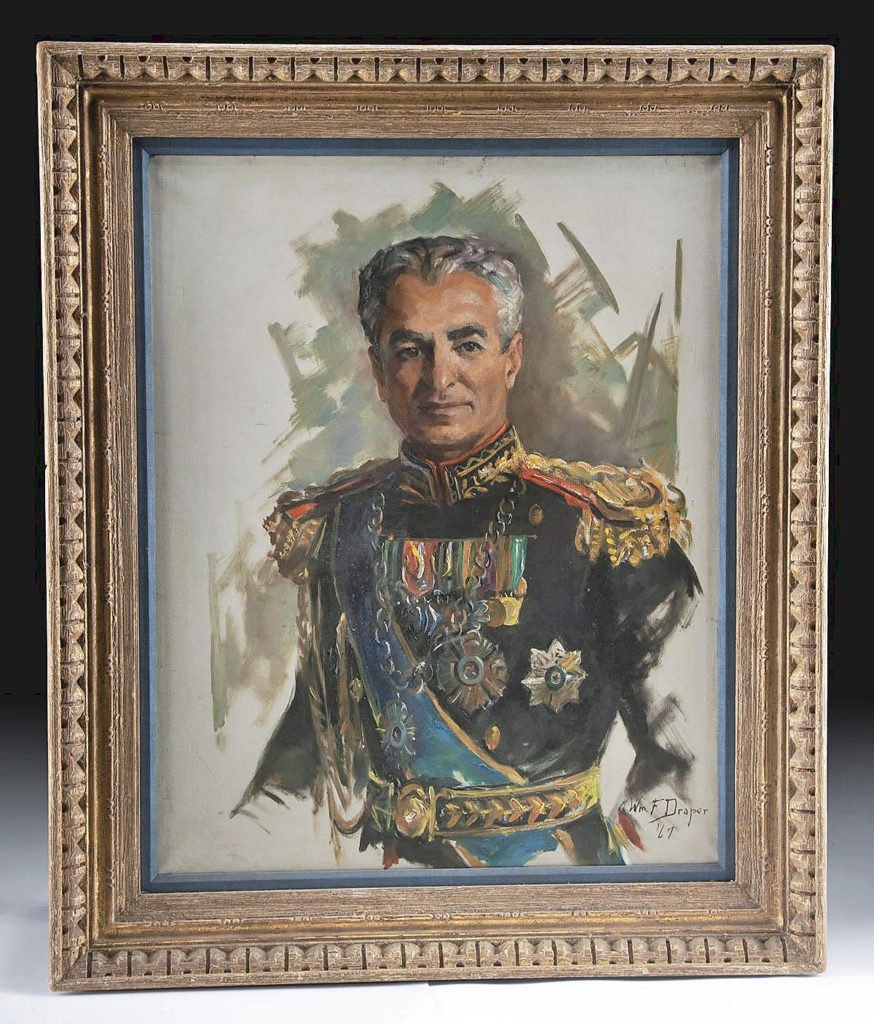
The official portrait William Draper painted of the Shah of Iran circa 1967 had been destroyed but this study for the work had survived in the family of artist. Estimated at $4/6,000, bidders took it to $12,650.
An Eleventh Century CE silver pendant in the form of Mjolnir, or Thor’s hammer, struck a chord with collectors of Scandinavian antiquities and finished within estimate, at $5,376. Cataloged as a “superb example of Viking artistry,” the approximately 2-inch-long piece was fashioned from 89.9 percent silver and had passed through hands in Illinois, London and Düsseldorf before coming to Artemis.
From Northern Europe to Southeast Asia, which was represented by a Cambodian Khmer sandstone figure of the Goddess Uma, circa Twelfth Century CE, that had provenance to the collection of Joseph Rondina (1927-2022), the proprietor of Joseph F. Rondina Antiques in New York City. In its first ever offering at auction, the 28½-inch-tall figure brought $10,120.
Prices quoted include the buyer’s premium as reported by the auction house. For more information, 720-890-7700 or www.artemisgallery.com.

